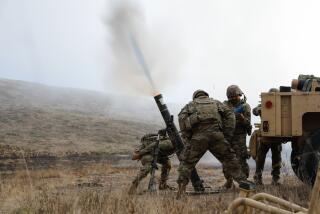Naval Spy Post Keeps an Ear to the Air
- Share via
SUGAR GROVE, W.Va. — Along the Bother Ridge Trail in the George Washington National Forest, hikers can admire the red pines, sniff the fragrant pennyroyals, spot wild turkeys and catch a glimpse of a massive super-secret government spying facility.
On the boundary of the forest is one of America’s most classified military installations--the Naval Security Group’s listening post for the National Security Agency.
The spy base is an antenna farm, where the crops include four satellite dishes--one as large as 150 feet in diameter--and a pair of antennas that look like giant circular fences.
From their mountaintop spy post outside Sugar Grove, people with the country’s top security clearances monitor international phone calls and radio traffic intercepted by the National Security Agency fleet around the world, military sources and local townsfolk said.
No Details Given
The Naval Security Group post ostensibly is part of the Naval Radio Station at Sugar Grove. Navy officials say the NSG contingent conducts “communications research.” When pressed for details about security group activities there, the Navy clams up.
“I don’t have any specifics because of security classifications,” said Lt. Cmdr. Craig Quigley, public affairs officer for the Norfolk Naval Base at Norfolk, Va.
When asked whether the Navy outpost is part of the super-secret National Security Agency, Quigley replied, “I just can’t get into a lot of details.”
The cover story for years was that the post was listening to the stars.
“The Naval Security Group is not involved in radio astronomy; they engage in eavesdropping,” said civilian intelligence expert James Bamford of Ashland, Mass.
Bamford revealed the security group connection to the NSA in a book, “Puzzle Palace.”
More to Read
Sign up for The Wild
We’ll help you find the best places to hike, bike and run, as well as the perfect silent spots for meditation and yoga.
You may occasionally receive promotional content from the Los Angeles Times.




